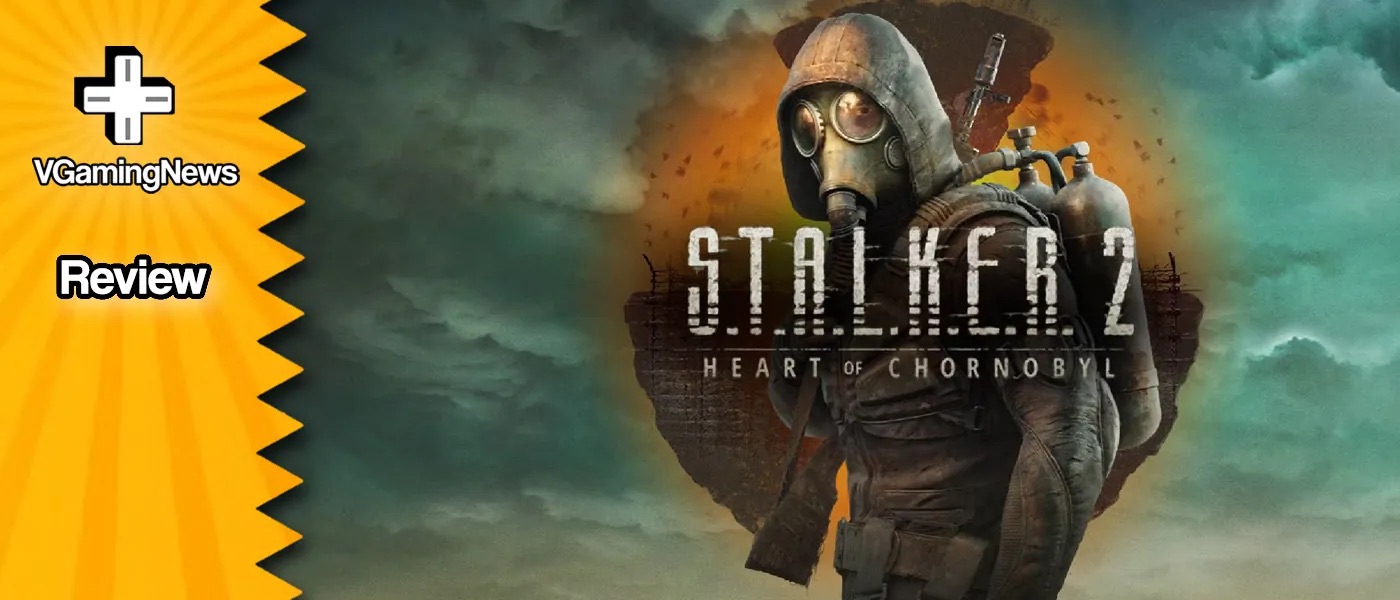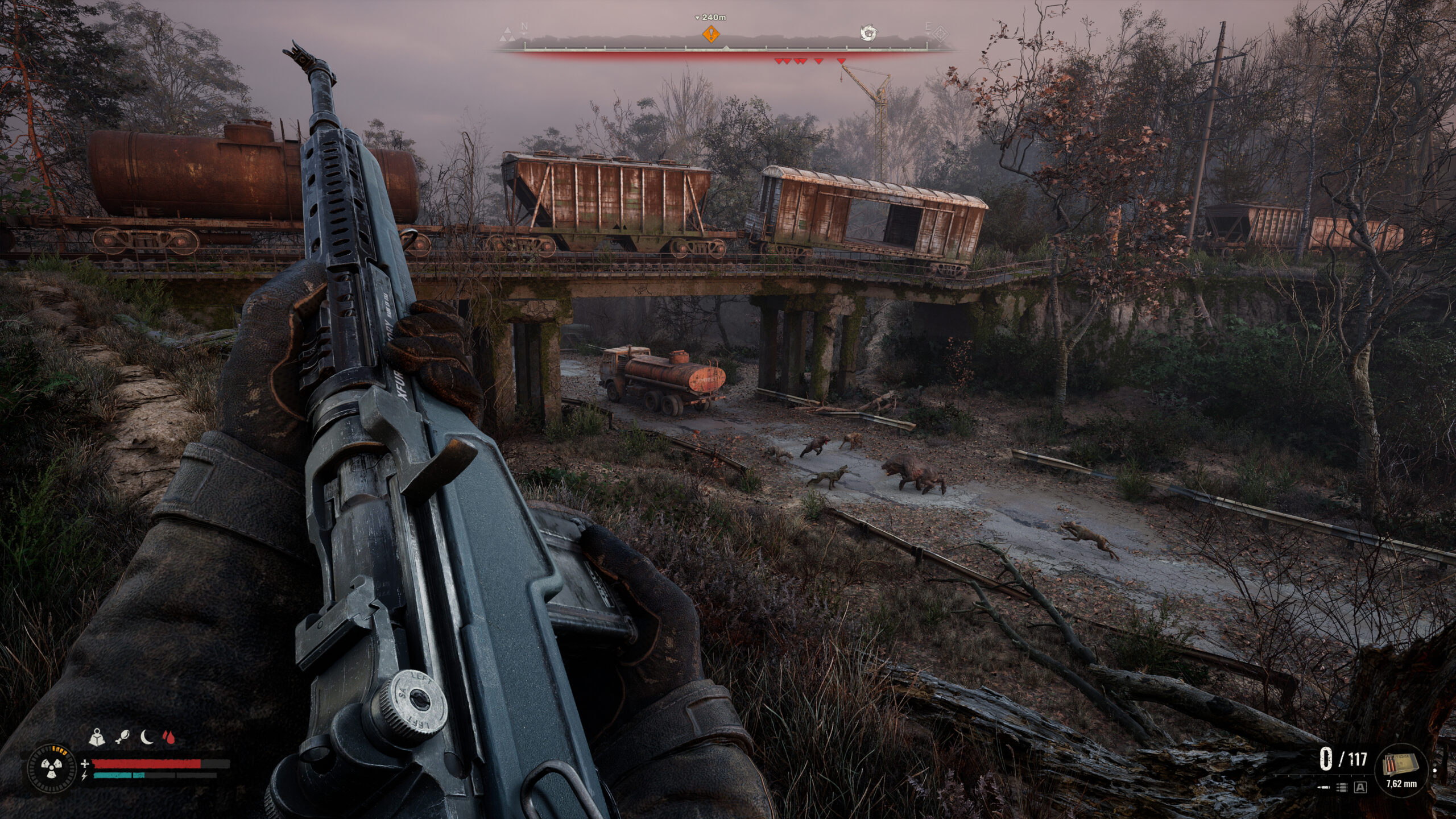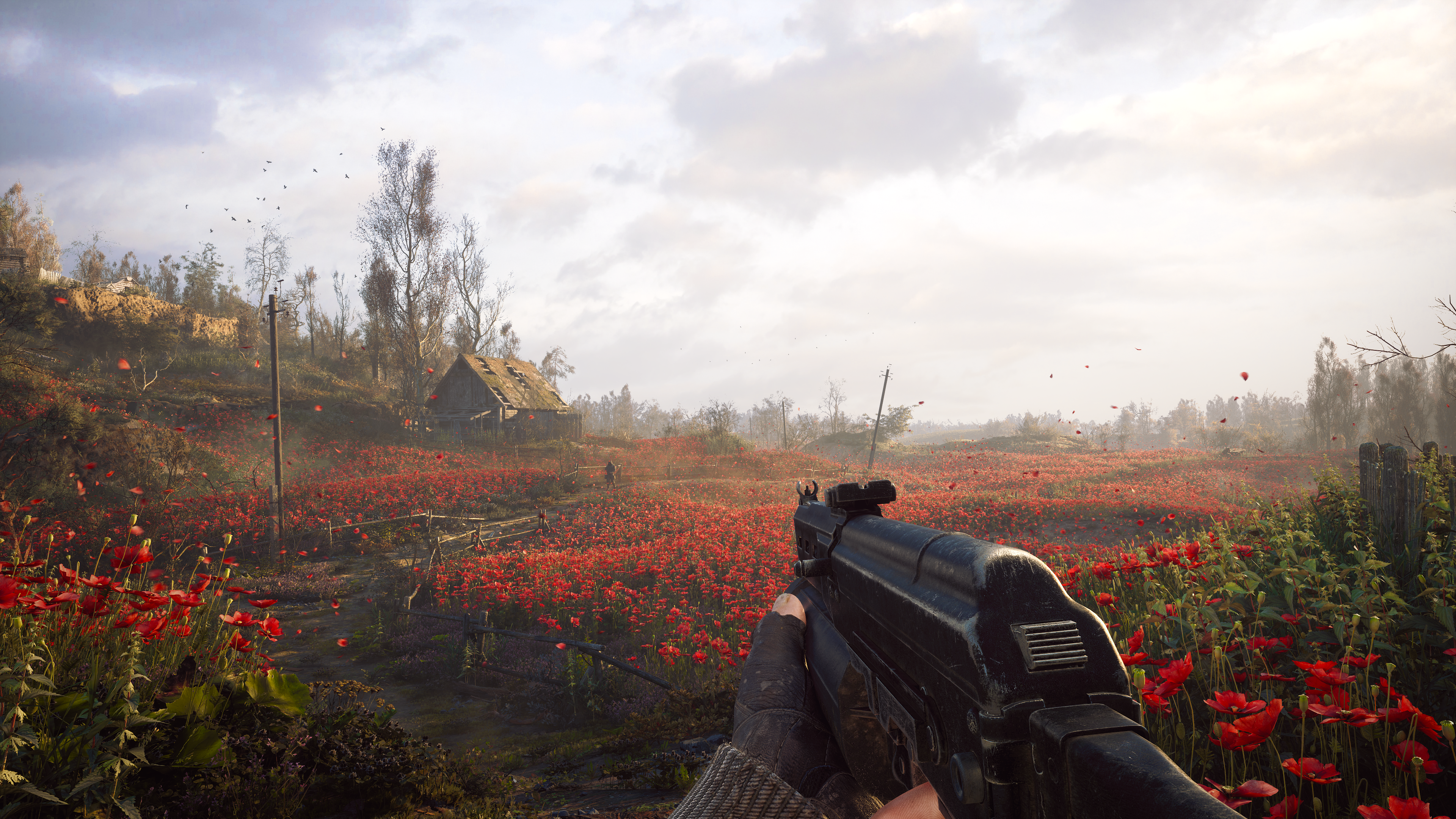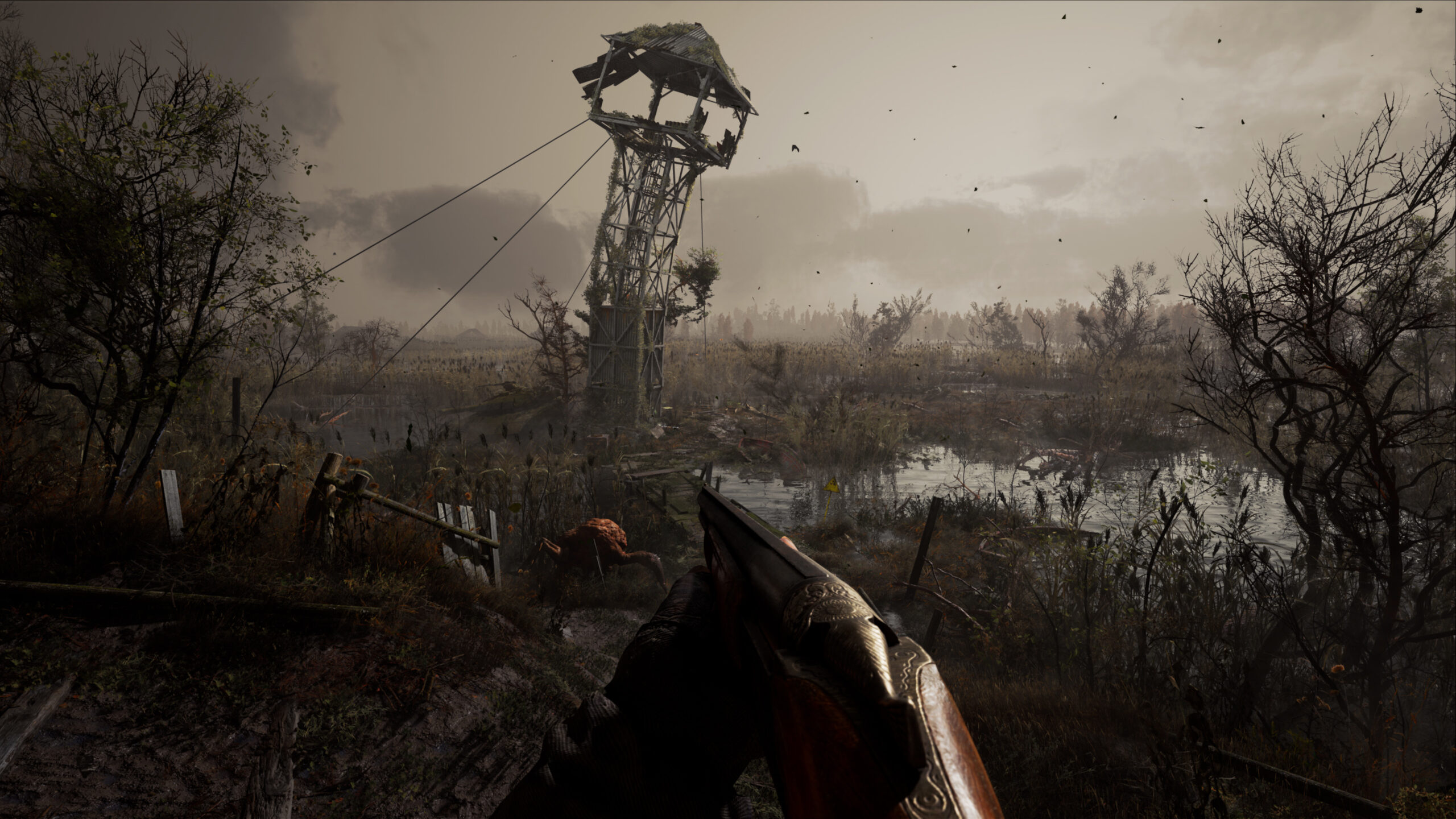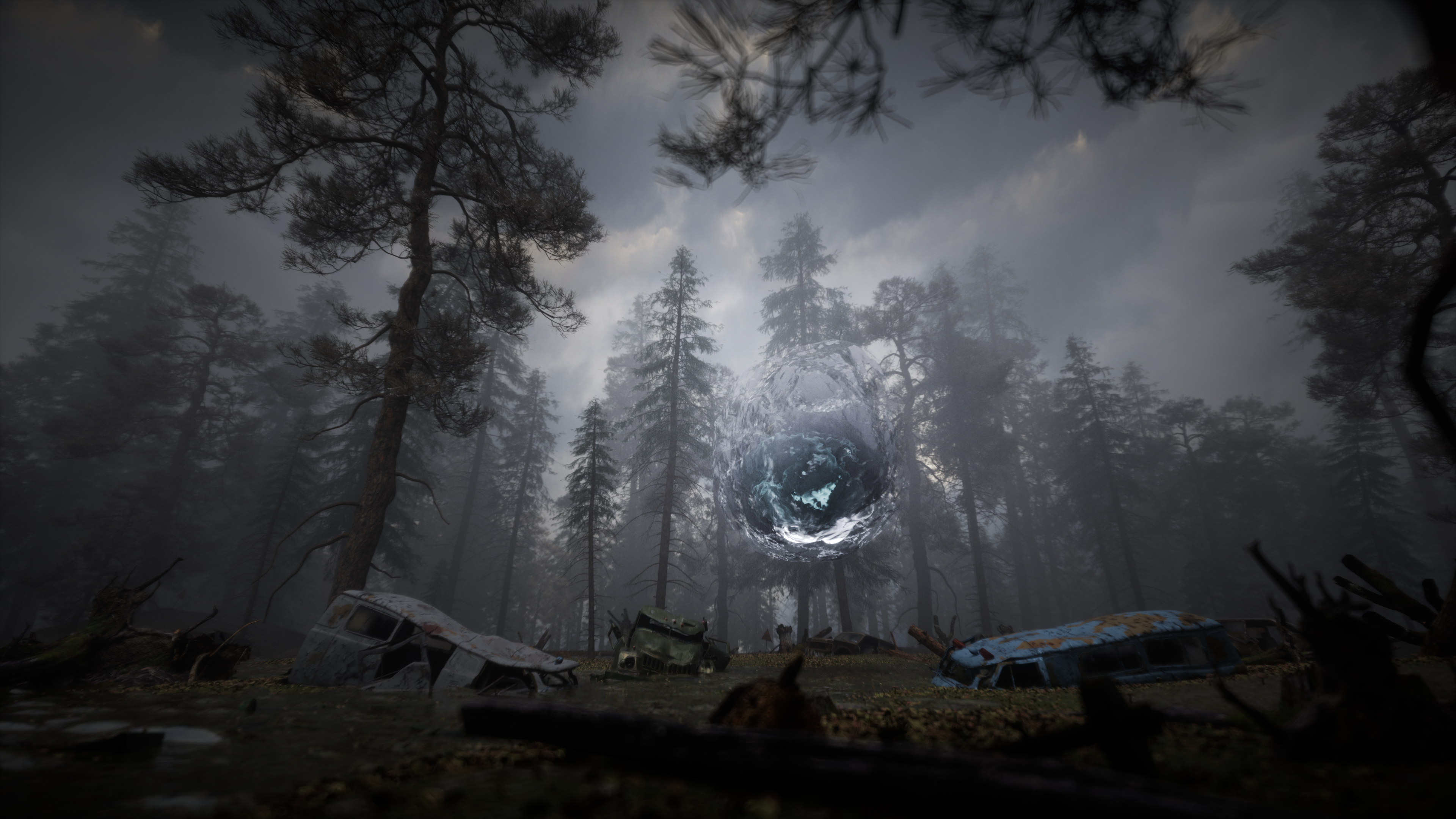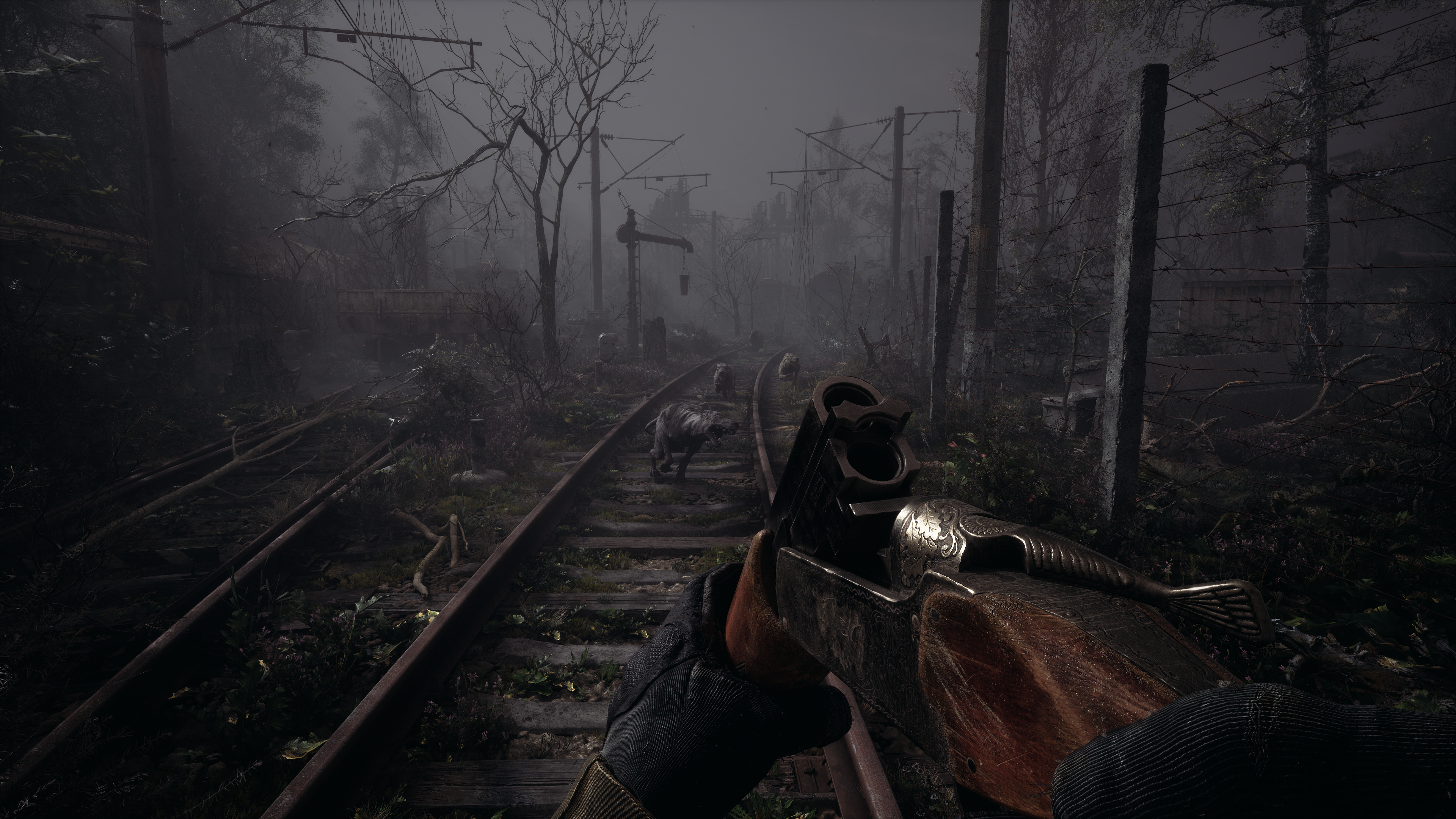Stalker: Shadow of Chernobyl was released in the distant past of 2007 and is very much a product of its era. It’s a game of the type and genre that doesn’t really exist, not since the immersive sim became fully enamoured with the story-heavy, narrative focused 0451-style pushed by the Deus Ex’s and Bioshock’s of the world. For me, Stalker is a foundational text of my own history as a gamer. While anyone who tells you that they are bringing you an “objective” or “unbiased” review of a game is either an idiot or a liar, I cannot pretend that I can approach Stalker 2: Heart of Chernobyl, without baggage.
Stalker was a game that put its world first and foremost in its design, and simply let you exist within it. Emergent design, even within levels that feel far smaller than I remember on a revisit, is everything. There is an objective, there is a narrative, but it’s adaptive and secondary to your own narrative as an explorer of this space. Stalker is a game about how you navigated the Garbage junkyard, delved into the haunted Agroprom facilities, or traversed the Red Forest. The characters and plot behind it is just part of the set dressing. The story is your actions, in a way that few modern big-budget games even attempt to emulate.
They really just don’t make games like this anymore. Perhaps the closest thing in feel, to me at least, would be something like that very first playthrough of Elden Ring; the experience of exploring a large and dangerous world with only an idea of your end destination and little conception of what you’ll face on the way.
At a Glance
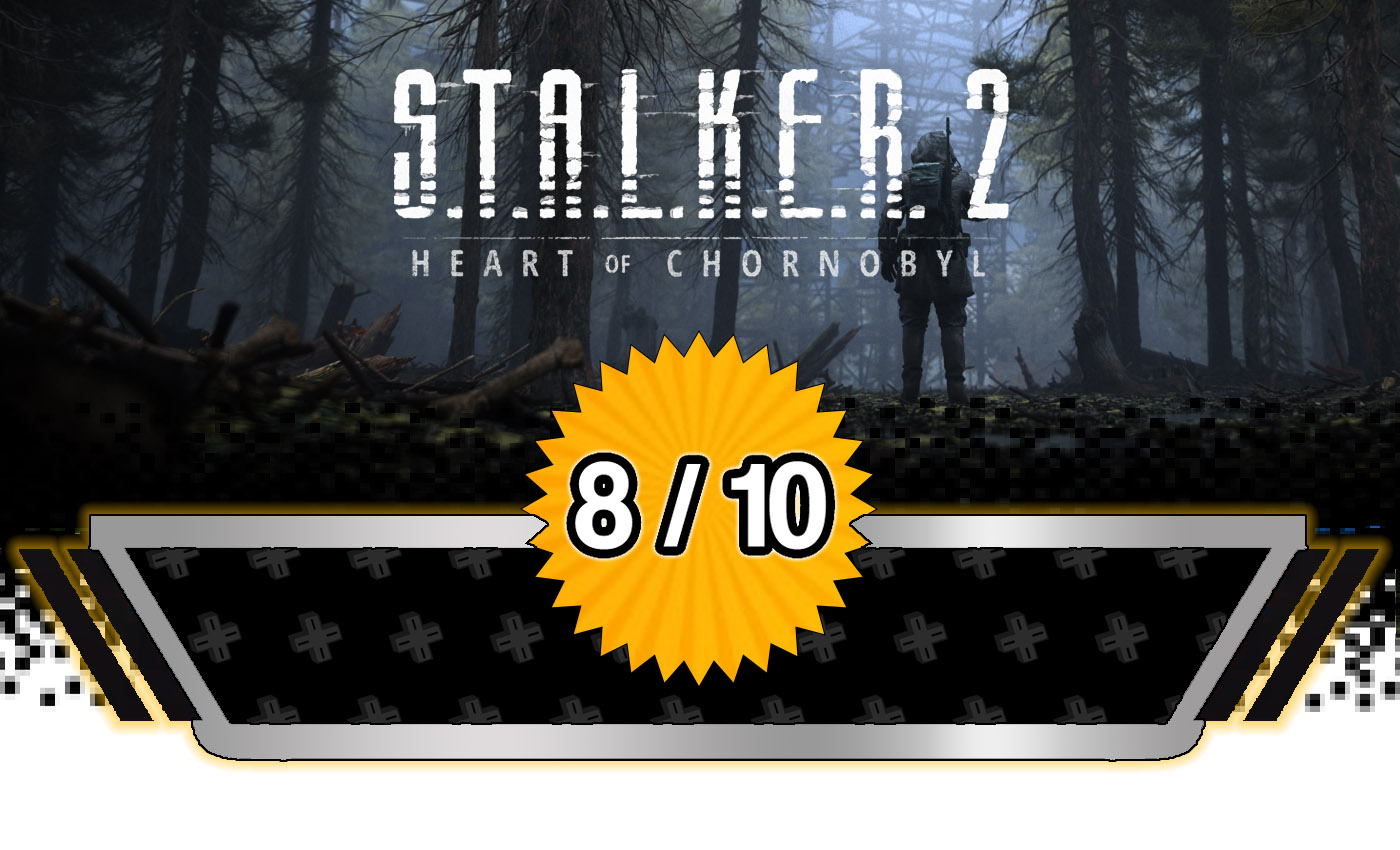
|
Positives |
Negatives |
+ Stunning open world + Amazingly atmospheric + Tight gunplay mechanics |
– Some bullet-spongy monsters – Poor voice acting – Backseat narrative |
Available on: |
What was striking to me upon playing Stalker 2, was how similar it felt to its predecessor, and how different it felt to other, modern shooters. This is a world away from either the more cinematic trend of military shooters like Call of Duty or the RPG influenced design of Borderlands. There is no XP being gained, no health bars, no damage numbers. It’s honestly quite refreshing. Gunfights are frantic and often disorientating, especially at night, though enemies have picked up the helpful habit of modern NPCs to shout out when they are throwing a grenade at you.
There are stealth elements, but enemies will spot you at range quite easily – crouching in the overgrowth and vegetation does not make you invisible. This is a big, open world game that feels very open – the flat plains of Eastern Europe mean exchanges will often take place at longer range than you might expect. There are also survival elements. You need to eat, and keep well stocked of meds, health packs and anti-radiation drugs, though vodka will do in a pinch. Your equipment will degrade over time and use, and as much of the money earned (or scavenged) will go into repairs as upgrades to your kit.
The game does have more of a modern approach to narrative than earlier entries, which is probably not too surprising. The first half hour or so is a little restrictive, with a few scripted moments that take control away from the player in a way that I found quite jarring, though isn’t too atypical of other games. Fortunately they don’t really persist into the game proper, and it’s quite happy to let you off the leash early on. The story itself is not going to win any awards, serving as little more than a breadcrumb trail to lead you through the world. Like the previous games, the real story is that of your journey through the world, so when the narrative takes control it is often more frustrating than interesting.
The cast of characters is also another weakness. Stalker’s zone is, quite bluntly, not a very diverse place. The NPCs are, uniformly, white guys with the same brown haircut. I think I saw a woman once, and from some promotional screenshots believe there may be one more I have yet to encounter. Aside from this not being a fantastic look for a game released in 2024, it also makes it harder to differentiate NPCs or really get attached to any of them. This also extends to the player character, Skif, who is a bland player-insert. A little customisation would be nice to see – I have no issue with an authored character in a game, but if you’re going to create a character for the player to inhabit then they need to have some character.
Voice acting is another miss, in English at least. I switched the dialogue to Ukrainian, which helped with the immersion and felt a lot better than the stilted delivery and odd mix of regional English and Irish accents the characters otherwise had.
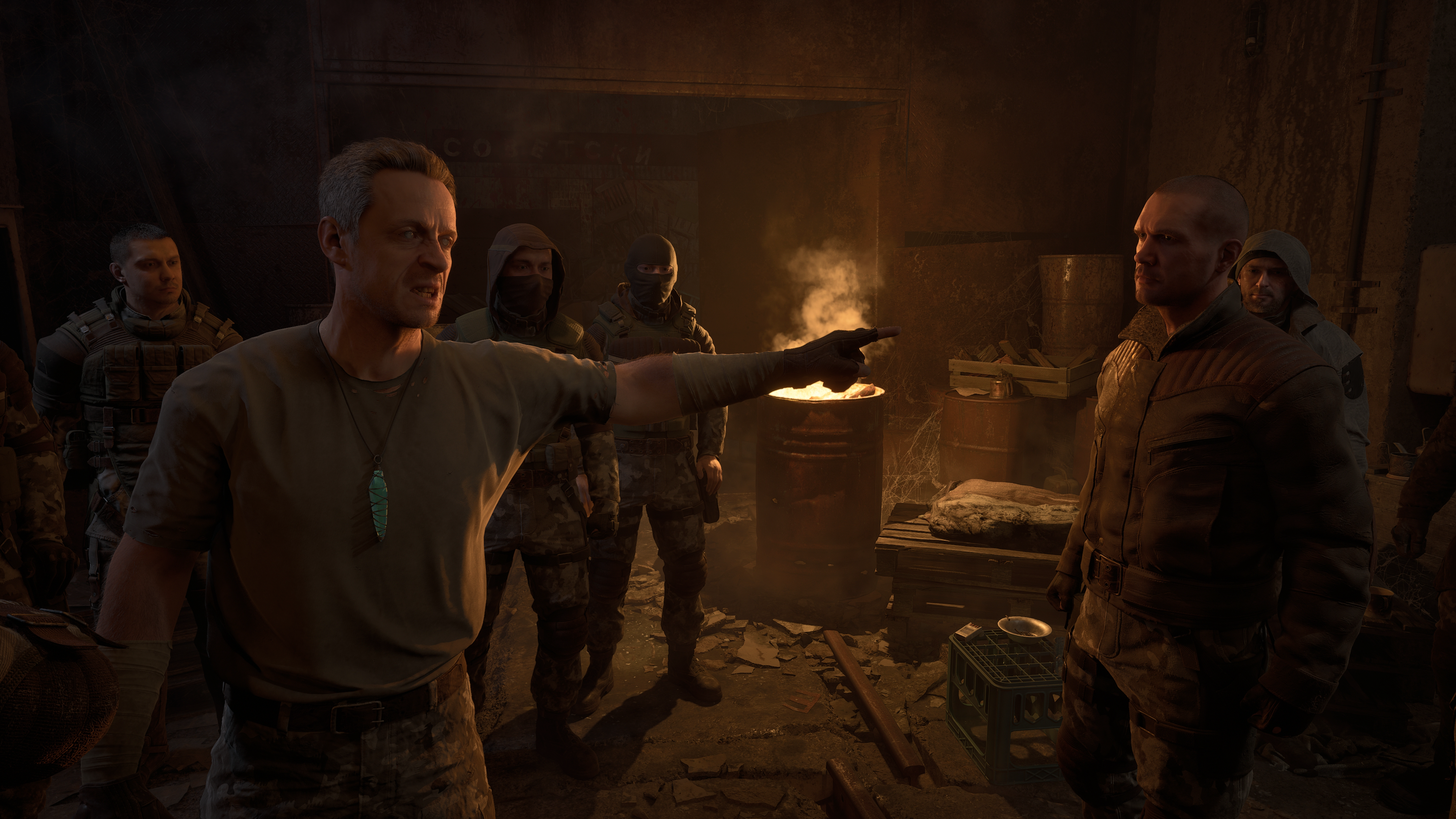
Those complaints aside, Stalker 2 isn’t really a game you should come to if you’re looking for a strong narrative and rich personalities to interact with. It is a game about, well, stalking the landscape, for the most part alone, picking through the ruined environment. And here it really does deliver. The world is, to quote Buzz Aldrin, “a magnificent desolation”. The post-post industrial landscape being slowly reclaimed by nature and twisted by the fallout of both real and fictional Chornobyl disasters is, frankly, stunning, and one of the very best open worlds I’ve ever explored. The weather in the game is exceptional, with storms sweeping across the landscape with real force, nevermind the otherworldly emissions that turn the sky red and send NPCs, friend and foe alike, running for cover.
Ruined factories, towns, bunkers and secret laboratories exist aplenty to delve into, and in these places the game often delivers an excellent horror experience. Mutants, monsters and some genuinely weird (and visually amazing) anomalies lie in wait, often with the kind of environmental storytelling that calls to mind the better part of Bethesda’s Fallout games. The mutants do have a tendency towards bullet-sponges, which can be frustrating early on when your weapons are limited in capacity and you are more likely to be struggling for ammo. Given how deadly bullets are to human opponents this can feel unfair or, worse, immersion breaking.
Monster design, however, is excellent. All the old favourites return and other, far weirder, creatures can be found in the deeper, darker corners of the zone, and exploring into the depths of a forgotten research facility brings with it a great tense terror at what you’ll encounter within.
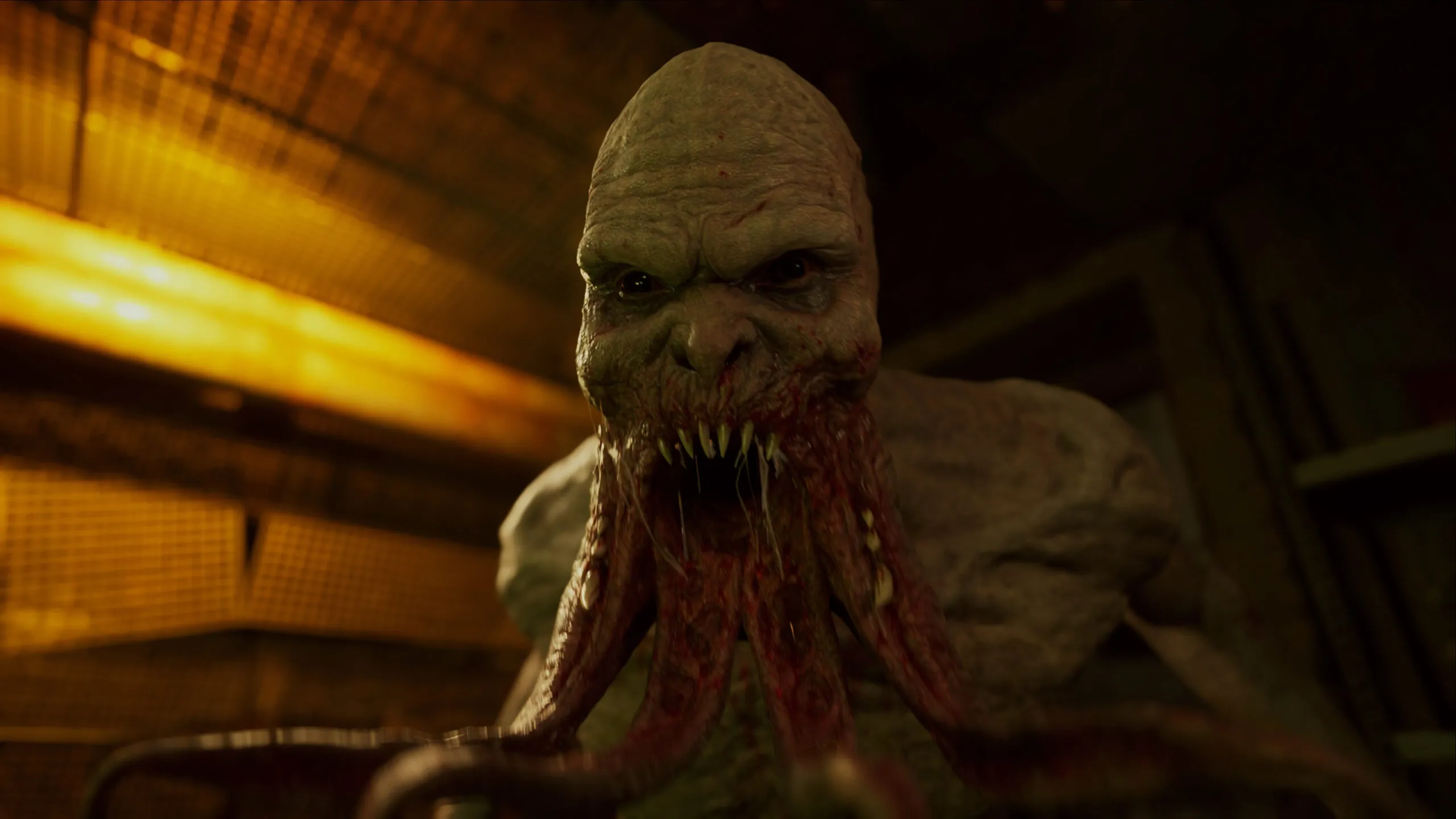
The anomalies are also worth some discussion. Graphically these are probably the biggest improvement over the older games, with weird reality-bending bubbles, swirls of dancing leaves, s and a myriad of other hazards. Often these anomalies will cluster in an area which, if you can explore within it, may yield an artefact – a valuable lump of… something (?) that can be traded for a significant sum, or be equipped for some mild resistance boost, at the cost of being slightly radioactive. Some of the anomalies interact with the world beautifully – in the starting area alone there’s a gravity distortion that loops chunks of a bunker in spirals above the crater where it once sat, or a bubble of water expanding and contracting over a lake.
There has also been a lot of talk around bugs in the game. From other reviews I’ve read I gather the pre-release version of the game was something of a mess. Happily, this seems to be much less the case now. I bought the game on the release day and encountered only a few issues around sound and, playing more recently, haven’t run into anything more significant than some occasional weird ragdolling. Playing on PC, of course your hardware means mileage will vary, but I certainly wouldn’t feel it necessary to warn anyone away.
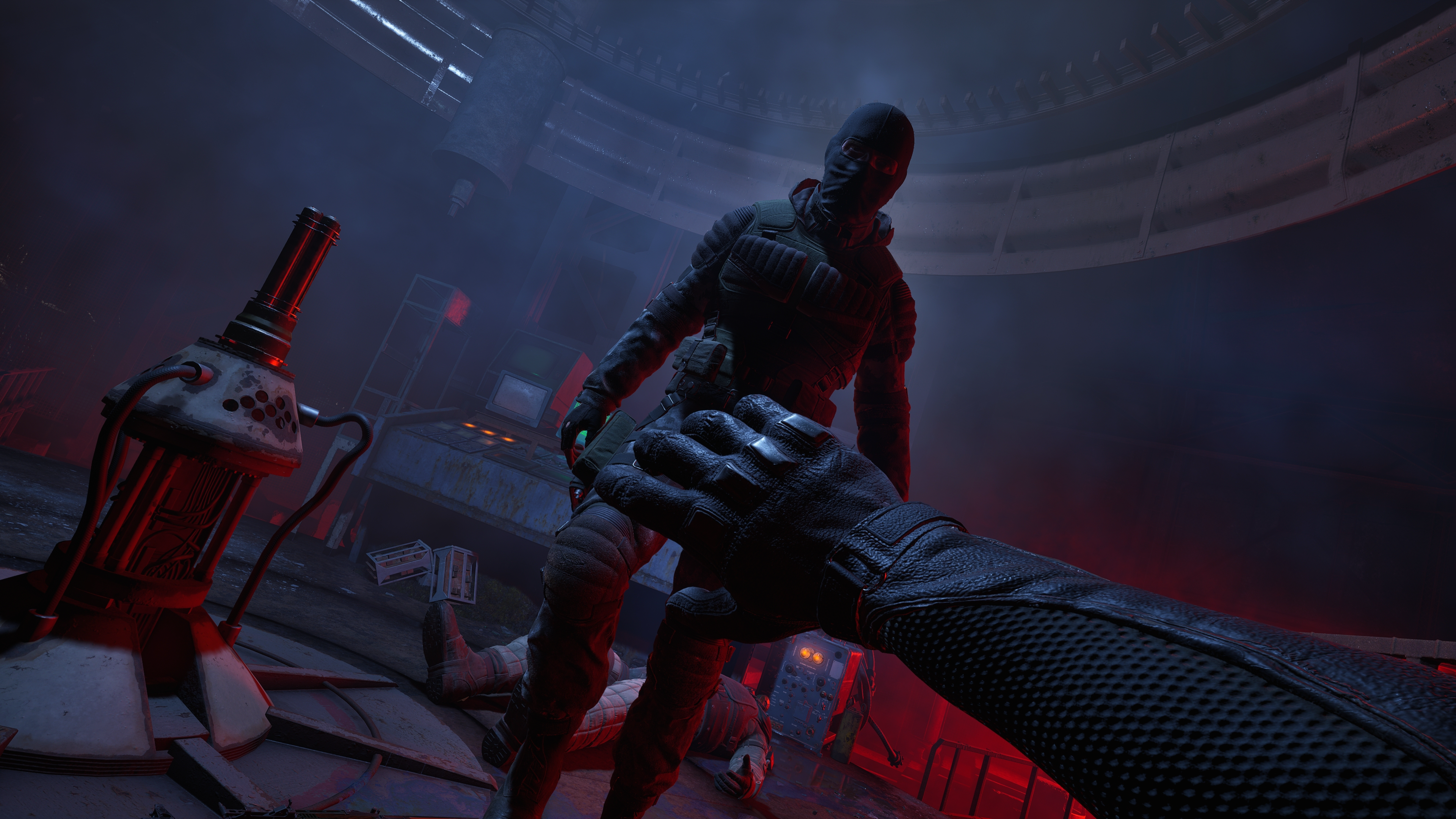
Any review of Stalker 2 also needs to acknowledge the bear in the room. Stalker is set in Ukraine, and developed by a Ukrainian team who relocated not only their studio and team but much of their lives to Prague following Russia’s illegal invasion in 2022. Members of their development team have fought and died in a brutal war that remains ongoing and is unlikely to end soon. That they’ve managed to finish the game under such circumstances is extraordinary, and certainly gives added context to the game, and its reception. There was a great article on the Guardian last year, which I recommend you read if you want the full story. I want this game to be good and to succeed because of these circumstances as much as my own history with the series and my excitement in the concept and setting. But games, or any media, should still be evaluated on their own merits – at the end of the day this is a product that is asking for your money. If you want to support Ukraine, donate to a charity. Here are some links. If you’re interested in the game and think it sounds good, buy the game. Just don’t conflate the two.
Stalker 2 is a game that I didn’t think would happen, and in a form I didn’t expect in 2024. It’s a game that eschews a lot of modern design sensibilities, both for good and bad, and that doesn’t really play like anything else made this decade. It’s a fantastic retro shooter, an excellent exploration sim, and at times, terrifying horror experience and melancholy musing on the industrial legacy we leave on the world. For some it will be frustrating, unclear and punishing, while others will revel in the freedom on offer. If you enjoyed the previous games, you already bought it. Otherwise, if you wanted a more desolate isolation than a Fallout offered, a more chaotic shooter than Call of Duty, a less structured apocalypse than Last of Us, or just really missed those moments in Far Cry 2 when your assault rifle jammed for the sixth time mid-gunfight, it’s time to hop the fence and enter the zone.
In the interest of full disclosure, VGamingNews was not provided with a copy of the game to conduct this review, and I had to barter for it myself with a few cans of questionable meat and a broken shotgun.
Thanks for taking the time to read our review, If you’d like to support us further, please consider buying us a coffee!


